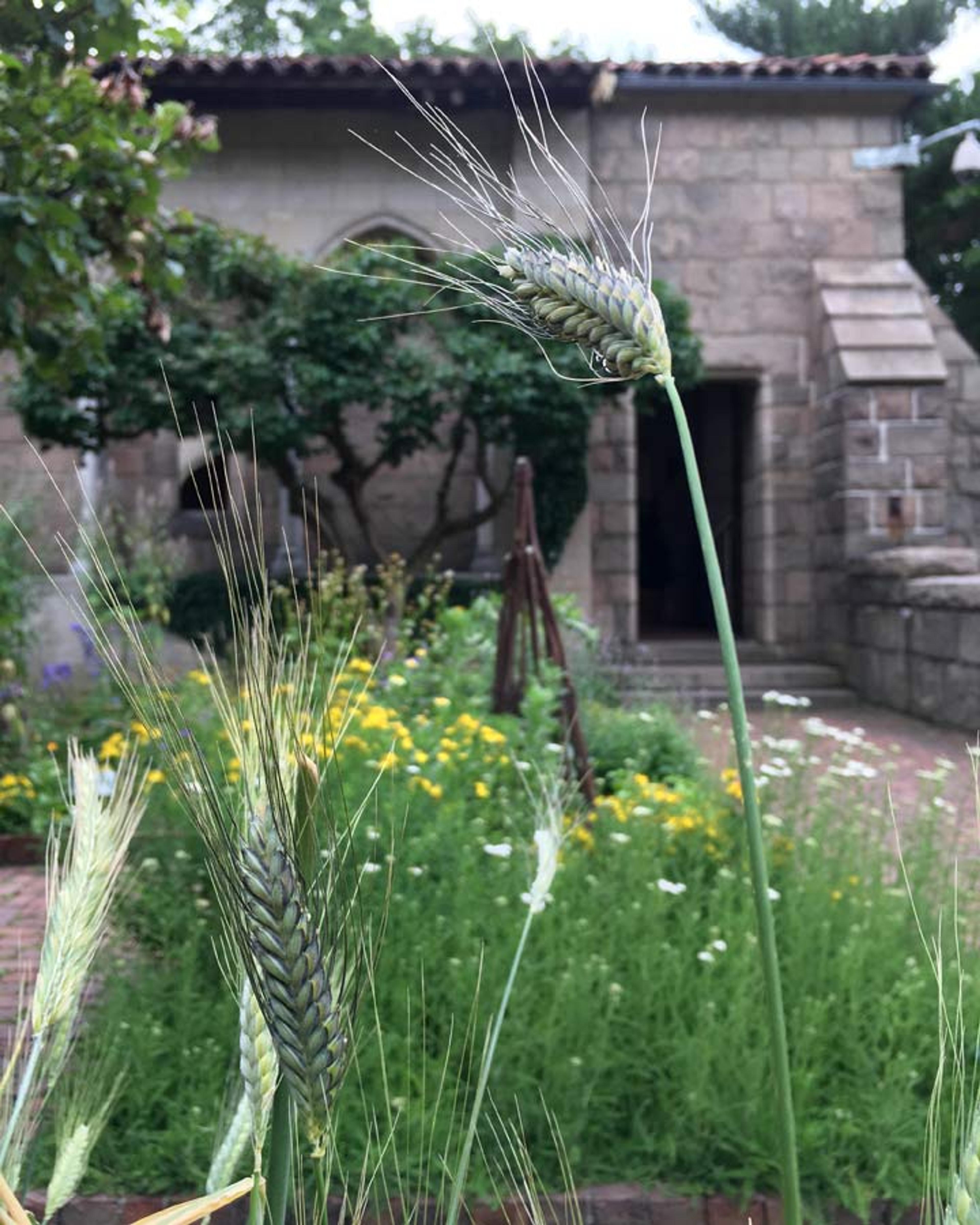
The cultivation of wheat is one of the more common agricultural activities depicted in medieval calendars. Attributed to Jean Le Noir (French, active 1331–75). The Prayer Book of Bonne of Luxembourg, Duchess of Normandy (detail), before 1349. Made in Paris, France. French. Tempera, grisaille, ink, and gold on vellum; Overall (closed): 5 3/16 x 3 13/16 x 1 5/8 in. (13.2 x 9.7 x 4.2 cm) Overall (approx. size opened): 5 3/16 x 7 11/16 x 2 13/16 in. (13.2 x 19.5 x 7.1 cm) Individual folios: 4 15/16 x 3 9/16 in. (12.6 x 9 cm) Storage (Book Box): 6 5/16 x 5 3/16 x 2 3/8 in. (16 x 13.2 x 6.1 cm). The Metropolitan Museum of Art, New York, The Cloisters Collection, 1969 (69.86)
«In the Bonnefont Herb Garden, we group plants according to how they were used in the Middle Ages. For example, in our garden bed of plants that were used in medieval housekeeping, we cultivate aromatic plants that were strewn about dwellings as natural air-fresheners and insect repellents. In a bed devoted to plants used in medieval magic, there are species that served as amulets of protection against lightning or flying venom, which was considered the principal agent of medieval disease and affliction. Last fall, we combined our medieval salads bed with our medieval vegetables in order to create a bed featuring medieval cereal grains.»
In our grains bed, we focus on the grass family, Poaceae. For the vast majority of people living in the Middle Ages, the cultivation of wheat, barley, rye, and oats was fundamental to survival. Baked into bread, it was the staple of their diet. Malted, it was the basis of ales which they drank liberally. As thatch, it provided their shelter. As fodder, it fed the livestock on which they depended.
In our "corne field" of approximately 36 square feet, we cultivate a sampling of the rare grains that sustained medieval life. (Cereal grains were once referred to as corn, a common name now applied to the New World crop Zea mays.) While medieval grains such as bread wheat (Triticum aestivum) or barley (Hordeum vulgare L.) still account for a large percentage of the world's sustenance, genetically these modern grains are quite different from their predecessors. The majority of modern seed sources offer only a few select cultivars of wheat that are bred to exhibit specific, desirable traits. Medieval agriculturists, on the other hand, were not working with stable cultivars. Rather, the seeds they used were called landraces, which are distinct ecotypes uniquely adapted to a particular environment. Each field of medieval grains would have had evolved in the truest Darwinian sense to reflect its particular location. In our modern artisanal-food diction, medieval landraces had true terroir.

A sample of some of the grains cultivated in the Bonnefont Herb Garden. Photo by the author
Visually, the most apparent difference between medieval grains and their descendants is their difference in height (see Pieter Bruegel the Elder's The Harvesters). Medieval wheats appear to have towered over their descendants. In fact, this remained the case through the 20th century. Nineteenth-century American artist Alexander Anderson's wood engravings depicting rural farm life are strikingly similar, apart from the dress, to medieval representations of similar activities. Wheat appears to reach past the shoulders of the field workers. J. W. Purseglove hailed the breeding of modern, dwarf cultivars during the 20th-century Green Revolution one of "the greatest developments of modern times."[1] The shorter wheats could take synthetic fertilizer without excessive vegetative growth, which leads to lodging, or toppling over.

Blue-tinged emmer wheat in the Bonnefont Herb Garden. Photo by the author
In keeping with our mission to cultivate and interpret medieval species, we will continue to seek elusive medieval grains. Do any readers have experience sourcing and cultivating medieval European landraces? Share with us.
Note
[1] Purseglove, J.W. Tropical Crops: Monocotyledons. Harlow, England: Longman Group Limited, 1972